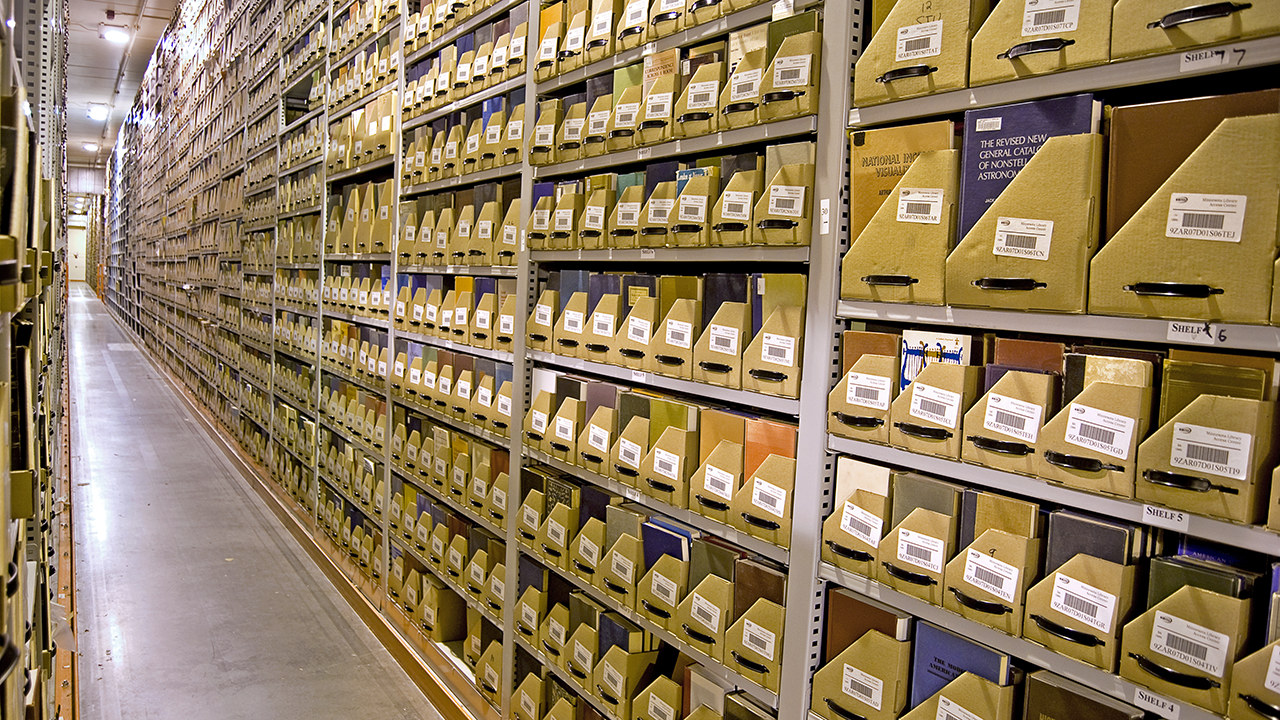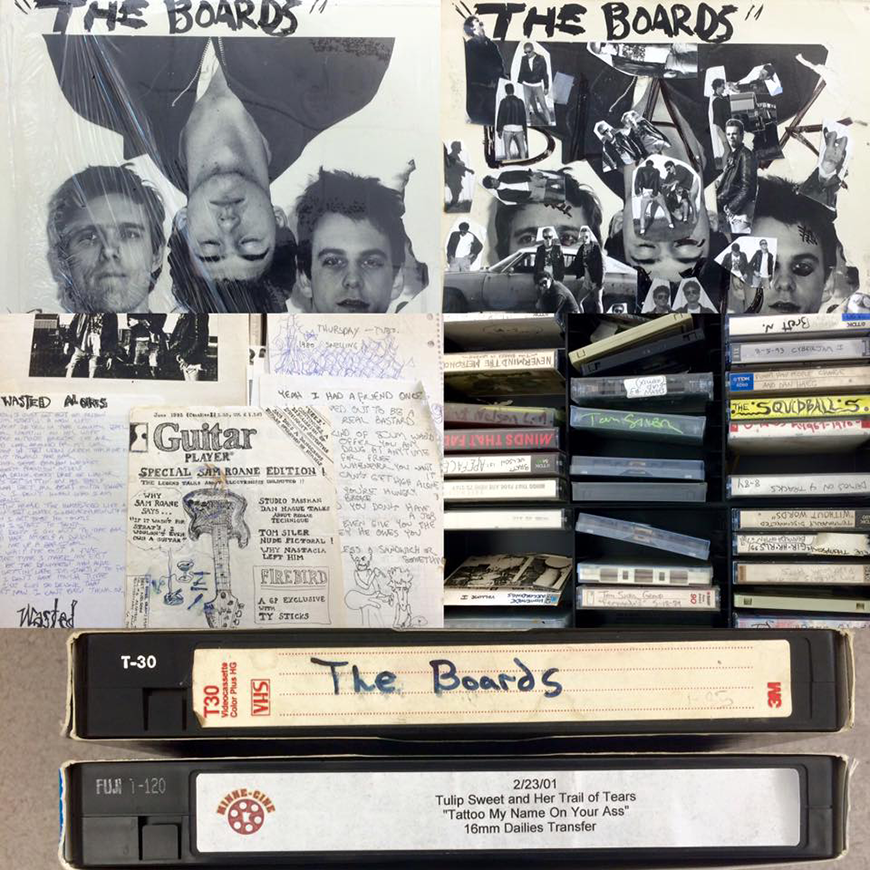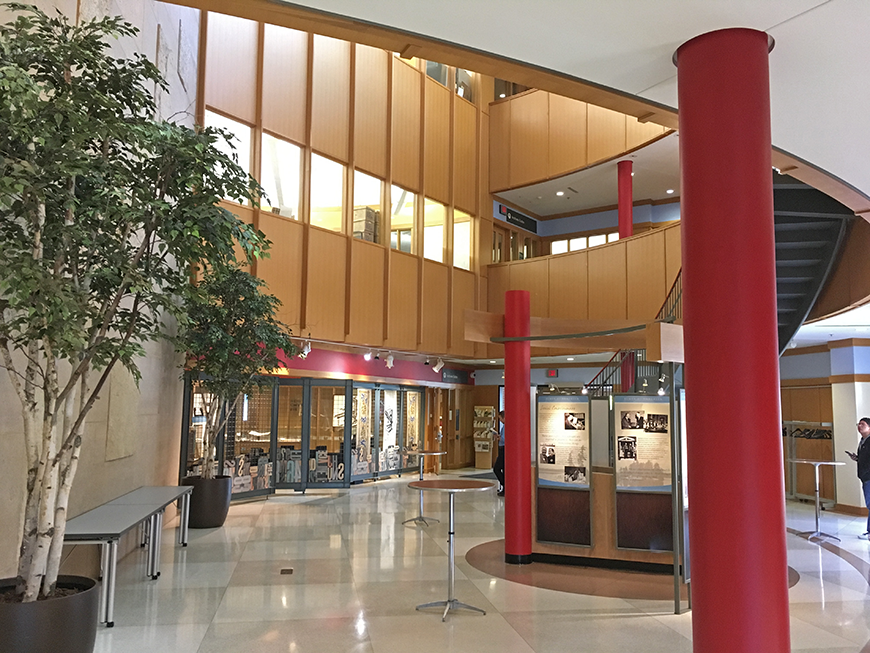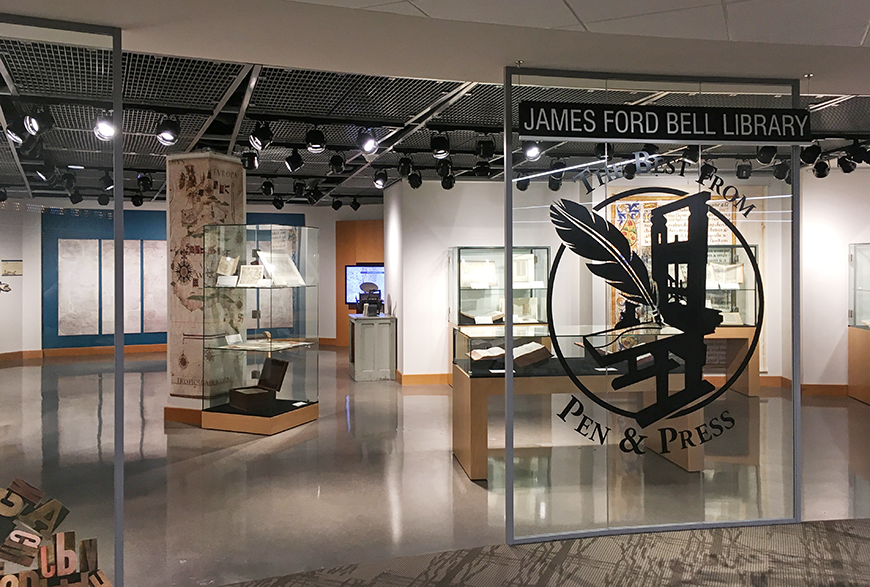
Photo: Nicole Holdorph
Walking past Elmer L. Andersen Library at the University of Minnesota, most would never imagine the world of knowledge and history hidden beneath their feet.
Built into the bluffs of the Mississippi River below Andersen, however, are vast caverns filled with manuscripts, correspondence, architectural drawings, posters, buttons, publishing mock-ups, illustrations, postcards, photographs, and more. These materials, curated and preserved by the U of M Libraries’ Department of Archives and Special Collections, offer an opportunity for visitors to explore subjects through written, visual, and auditory records that can’t be found anywhere else—making it a unique resource for researchers.
Kris Kiesling, director of archives and special collections for the past 13 years, said the 15 collections that make up the archives below Andersen Library cultivate a wide range of materials that help to tell stories about the past.
“It’s anything an individual, company, or organization would create in carrying out their work, or collections relating to a particular topic,” she said.
Walking through the archives, which are kept at 62 degrees Fahrenheit and 50 percent humidity all year round to best preserve the papers and films, means passing 130,000 cubic feet of preserved materials. One set of rows carries manuscripts, correspondence, and more by African American writers as part of the Givens Collection of African American Literature. Another section holds the Sherlock Holmes Collections, the world’s largest assortment of materials related to the fictional detective and his creator, Sir Arthur Conan Doyle. Further on is a collection of original artwork and publisher’s dummies from award-winning children’s book illustrators—a resource of the Children’s Literature Research Collections.
Some of the collections have a regional focus, such as in the Upper Midwest or in Minnesota. The Minnesota Underground Music Archive, for example, is a growing section of the Performing Arts Archives that documents Minnesota’s legendary punk scene and underground music culture from 1950 to the present.

The archives draw a wide range of visitors, and researchers are prominent among them. U faculty access the materials for their own research and also introduce their students to the resources available for their class projects. Graduate students visit the collections when writing their master’s theses and dissertations. And it isn’t just the campus community making use of the archives—researchers, writers, and more come from all over the world to access the unique materials available.
And while some collections may seem geared toward a single discipline at first look, visitors often find creative and unexpected ways to make use of them. Take the Charles Babbage Institute, for example, a collection dedicated to preserving the history of information technology. While the resource is an obvious choice for historians interested in technology, researchers have also used the collection to study trends of gender and race among employees in the information technology industry.
“You never know how the collections are going to be used,” Kiesling said. “The archives support all kinds of research, from the history of medicine and architecture to performing arts and literature.”

A Growing Resource
Most of the archive’s collections were added in the 1960s, many of them spurred to life by large donations of materials from private collectors to the University. One of the oldest among them is the James Ford Bell Library, a collection of rare books, maps, and manuscripts documenting the history and impact of trade and cross-cultural contact from before 1800. The newest is the Jean-Nickolaus Tretter Collection, added in 2000, which collects materials about the gay, lesbian, bisexual, and transgender experience with an international scope.
The archives continues to grow fast, adding between 1,500 and 2,000 feet of linear shelf space in new materials each year. The University Archives is the most rapidly expanding collection, fueled by the research, teaching materials, lab notebooks, databases, and administrative records of University faculty, staff, departments, and offices. The new materials in other collections tend to be either individual gifts, donations of whole collections, or purchases made by the collections themselves. As each collection evolves, it adjusts its goals for what types of new materials to add. The Social Welfare History Archives, for example, has increased its focus on materials related to domestic violence prevention.

The curatorial staff are well-versed in their collections and experts at assisting researchers in locating the materials they need, Kiesling said. Each year, the staff assists between 3,000 and 3,500 visitors access materials in the collections, and fields about 10,000 reference questions.
“We’re here to help,” she emphasized. “We have incredible resources available for research.”
Learn more about the collections accessible at Andersen Library.